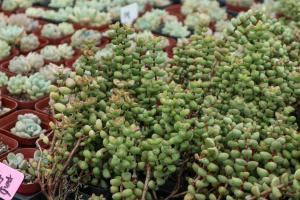Does Acrylic Paint Stay on Plant Pots?
If you’re a plant lover, you know much importance in decorating your plant pots, and one of the most common ways to do that is by painting them. However, the type of paint you use can make a significant difference in the longevity of the design.
Acrylic Paint vs. Other Paints
Acrylic paint is one of the most popular paint types for painting plant pots because it adheres well to most surfaces, including clay, ceramic, plastic, and metal. Unlike other types of paint, acrylic paint is also waterproof, making it perfect for environments like where plant pots are exposed to moisture or humidity.
Most other types of paint may not adhere well to the surface of the pot, which means they may crack, peel or flake over time, and they're not water-resistant, which can be a problem if you need to water your plants frequently.
Preparing the Surface Before Painting
The key to painting plant pots with acrylic paint is to prepare the surface. Whether you're painting a brand new pot or repainting an old one, you must clean it thoroughly and remove any dirt, grease, or other contaminants that might interfere with the adhesion of the paint.
To clean the pot, use a mild soap solution and a brush, then rinse it well and let it dry completely before proceeding with painting. If there are any cracks or chips in the surface, you can use sandpaper to smooth them out.
Priming the Surface with Acrylic Gesso
Acrylic paint doesn't always adhere perfectly to all surfaces, especially those that are porous, like terracotta. In these cases, it is recommended to prime the surface with an acrylic gesso layer before painting.
Gesso is a mixture of acrylic polymer and calcium carbonate or chalk that creates a smooth, non-porous surface for the paint to adhere to. It acts as a barrier between the surface and the paint, preventing the paint from soaking in and getting absorbed, and providing a better adhesion and durability over time.
Sealing the Painted Surface
Once you have finished painting the plant pot, it is essential to seal the surface to protect it from the elements and to ensure that the paint doesn't peel or fade over time. You can use a clear acrylic sealant spray or a clear acrylic varnish to do this.
Apply a thin coat of the sealant or varnish evenly over the painted surface and let it dry for at least 24 hours before handling the pot. Once dry, the sealant will provide a water-resistant layer that protects the paint from moisture, UV rays, and other outdoor elements. It will also give the pot a glossy or matte finish, depending on the type of sealant or varnish you use
Conclusion
In conclusion, acrylic paint is an ideal option for painting plant pots due to its water resistance and durability. Preparing the surface and priming with gesso ensures that the paint will adhere well and last longer. Finally, sealing the painted surface will protect it from the elements and ensure that the design remains intact for as long as possible.

 how many times do yo...
how many times do yo... how many planted tre...
how many planted tre... how many pine trees ...
how many pine trees ... how many pecan trees...
how many pecan trees... how many plants comp...
how many plants comp... how many plants can ...
how many plants can ... how many plants and ...
how many plants and ... how many pepper plan...
how many pepper plan...































